A comprehensive guide to choosing parts and assembling your first AR-15 Rifle
Chapter 1: Lower Receivers
Chapter 2: Upper Receivers
Chapter 3: Calibers & Barrels
Chapter 4: Muzzle Device
Chapter 5: Handguard
Chapter 6: Bolt Carrier Group (BCG)
Chapter 7: Charging Handle
Chapter 8: Lower Parts Kit
Chapter 9: Buffer Kit
Chapter 10: Stock
The Anatomy of the AR15
So, you want to build your first AR15 rifle? You go online or to your local gun store to purchase parts for your build. Instead of being met with a clear direction, you are immediately bombarded with a slew of choices. Barrel length, gas system, buffer weight, and more are all thrown into question, and you become overwhelmed with this tsunami of information and choices.
Each part and component will amalgamate into a complete firearm with its own set of characteristics that lend itself well to certain applications. The beauty of AR15s in the 21st century is this dilemma – choices, a lot of them. Something I always say when it comes to rifle building is that there is no free lunch, each part and component lends itself well in certain areas but almost always with a cost. If there was one perfect configuration, we as well as the rest of the industry would only be selling 1 rifle with a set guideline of parts and accessories.
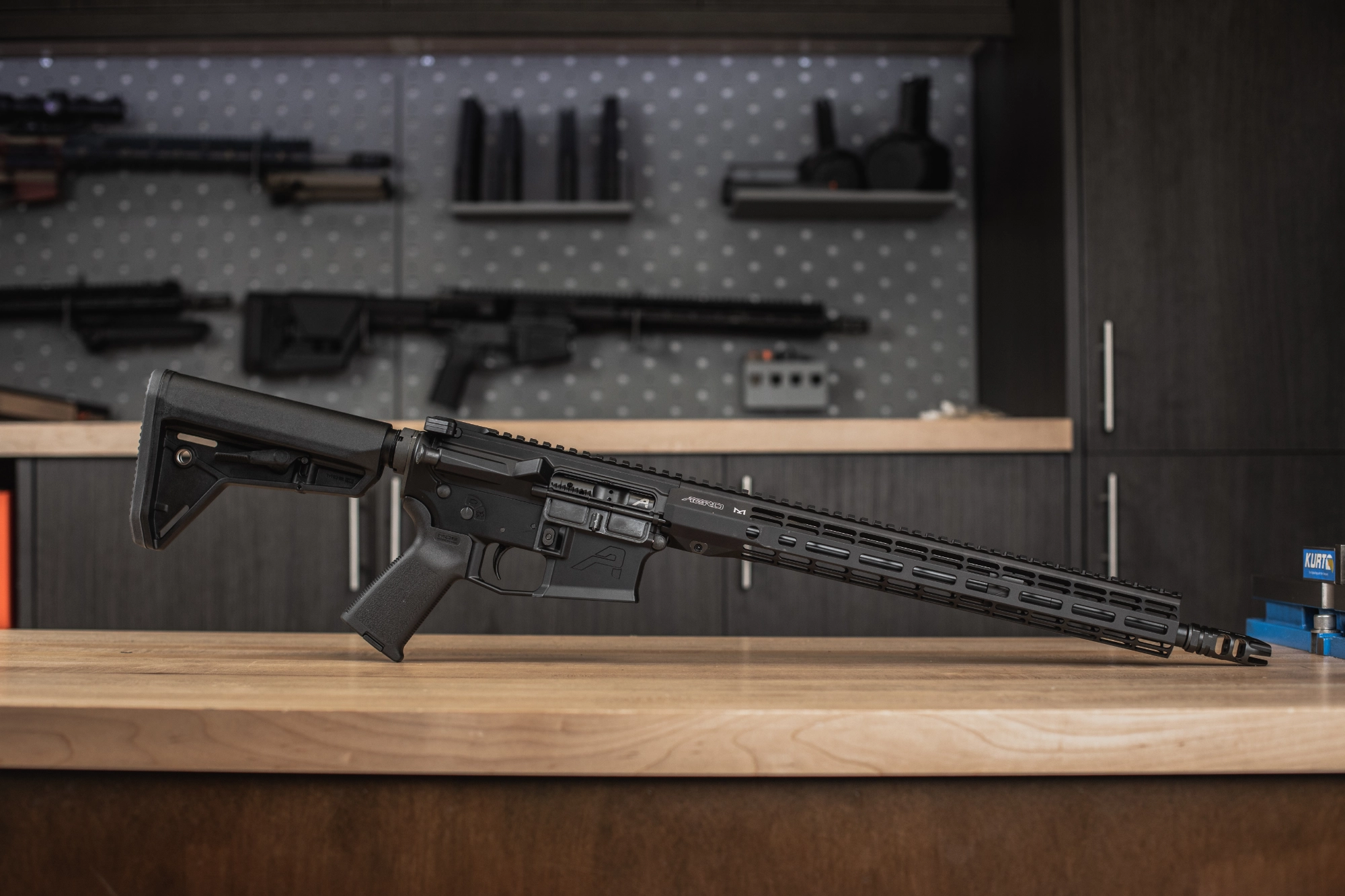
Pair the sheer number of choices with the wild variable: opinions. There is a wealth of knowledge about the AR15 at the tip of your fingers. The community is full of good, bad, and ugly advice on the topic that is hard to navigate without direction. You can search Youtube and hear one thing and then go to the local gun shop and hear something else that directly contradicts what you just heard. I remember when I first started tinkering with rifles: I would set out and try to learn as much as possible on any given topic only to be hit with different and contradicting opinions and not knowing what to trust or do. This wall of information is super overwhelming to the green rifle builder and can sometimes do more damage than good.
What I am about to share is a build that I think checks a lot of boxes for your “first build”. It lends itself well in a lot of areas and doesn’t pigeonhole you into one specific use or application. This is by no means the one build that everyone should start on, but it is a well-rounded option that can at the very least be the inspiration for what you want to do!

Lower Receivers
I start most builds with an M4E1 lower receiver, and I think you should too. Granted I am biased – but these receivers not only look great, but they will make life a lot easier when it comes time to wrench. The removal of roll pins (what are traditionally used to attach certain parts to an AR15 lower requiring special punches) in place of threaded pins is reason enough to snag one of these. It will save you a lot of headaches in building and will minimize the chance of you driving a punch into that fresh anodizing. I could talk all day about why M4E1s are great but for the purposes of getting your rifle built the M4E1 just makes building easier.
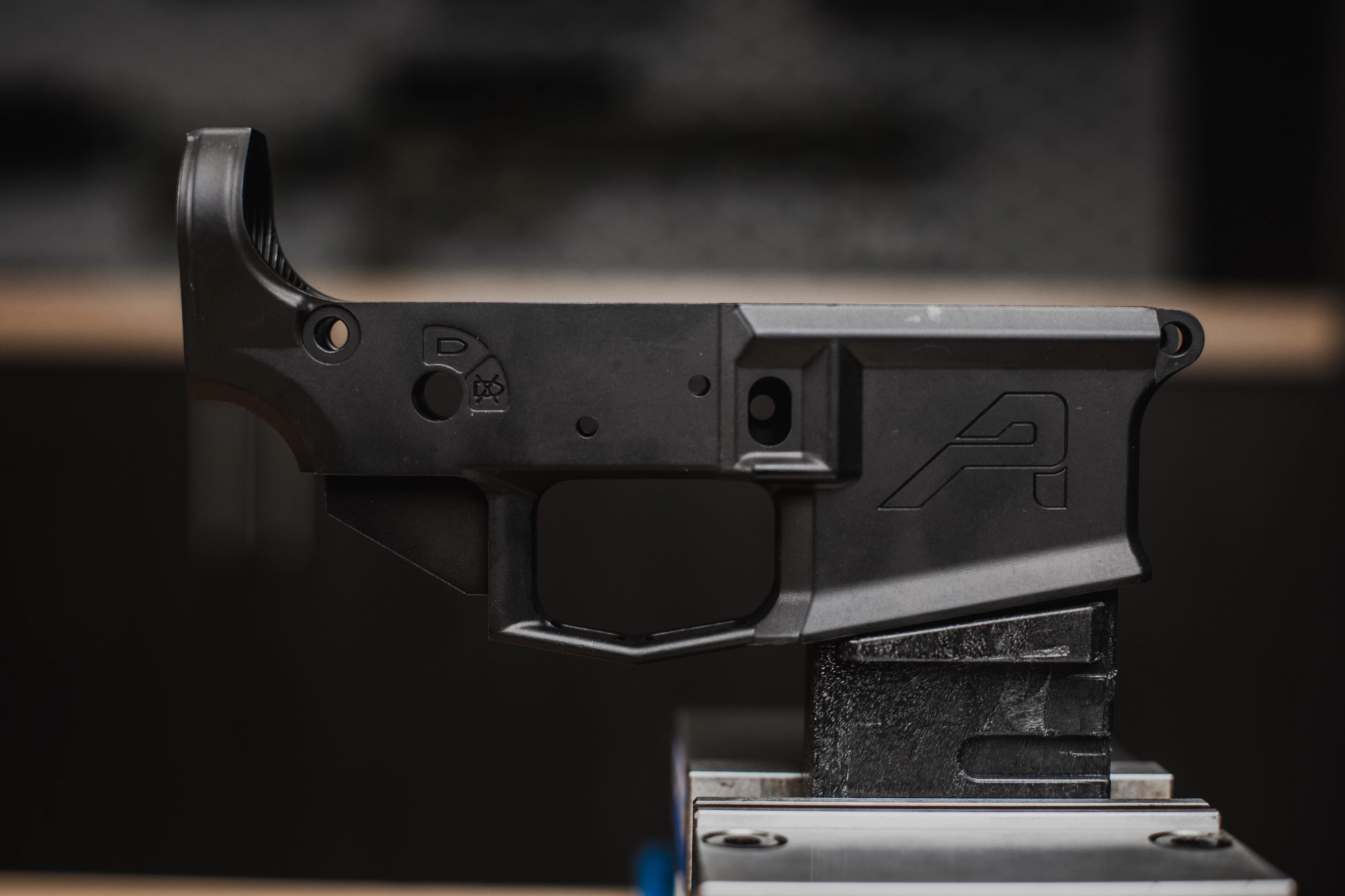
Upper Receivers
Now that the lower is out of the way the upper is a no-brainer. An M4E1 threaded upper receiver pairs perfectly with the M4E1 lower and accepts mil-spec compatible handguards. When purchasing you have the option to buy your upper receiver stripped or assembled. Assembled just means that the dust cover and forward assist are already installed. I would be lying to you if I said that installing these 2 parts will make or break your build experience. It won’t. I buy assembled 99% of the time just so I don’t have to deal with installing the dust cover but if you want to install those small parts yourself more power to you. The upper and lower receiver can also be purchased as sets, which provides the foundation of most ar15 build kits.

Calibers and Barrels
Now that the receivers are out of the way we get into where debates will happen from now until the end of time: calibers and barrel length. Caliber is easy for a first: 5.56×45 (this chambering can also fire .223 Remington if you were unsure). There are tons of cool calibers out there that people will talk about for days, but 5.56 is the standard for intermediate cartridges and has been for a long time. It is one of the most prolific rifle calibers in the world, is usually very affordable, and is capable of a variety of things out to 500 yards (or more if you are up for a challenge) depending on barrel length and ammo. People will give you tons of recommendations I am sure, but trust me – build 5.56 and if you want some boutique caliber down the road you can always build a second rifle. Please do not take this as me saying that 5.56 is the end-all-be-all to calibers. It isn’t. Most calibers have their own set of benefits and drawbacks but I think 5.56 is one of the best options especially if this is your first rifle.

Every year or even month there is a new in-vogue barrel length that everyone swears by. Any time you ask this question you will get hit with a variety of answers that are heavily based on personal choice. I will make this easy for you: 16”. This length is very capable in a variety of situations, does not require you to permanently affix your muzzle device (which can be a commitment you are not ready to make), and does not toy with NFA paperwork or the uncertainty of pistol configurations.
For gas system length you have 2 options with a 16” 5.56 barrel: carbine and mid-length. I recommend mid-length for most cases. Without getting into the finer details of gas systems the mid-length system is generally softer shooting and still reliable out of a 16” barrel.
So where does this leave you? Profiles and finishes. Our 16” 5.56 mid-length CMV barrel is very well-rounded. It’s got a modest profile with a good finish. The barrel is the heart of your build so it is understandable to overthink it a little bit as it is imperative to function. This option is a safe play for most and won’t steer you wrong.
Once I select my barrel, I always immediately choose the accompanying products for it: gas block, gas tube, and muzzle device. Grab a .750 gas block (sizing for this part will change between certain barrels) and a mid-length gas tube. We offer gas blocks and tubes in a couple of different finishes, but these choices are mostly aesthetic and will have little or no effect on performance in most use cases.

Muzzle Device
The muzzle device is a super personal choice and one I have a very hard time guiding people on. Each muzzle device has pros and cons associated with it that the builder needs to weigh out based on application. The VG6 Precision Epsilon 556 is a great option for cutting back on recoil. It is a muzzle brake so it will be loud to those standing next to you and will produce some more noticeable flash. Even so, the Epsilon works to mitigate some of the excess flash produced by traditional muzzle brakes. If that isn’t your style or you are not sure what you want yet, then just get the A2 birdcage flash hider (don’t forget to grab a crush washer if you go this route). These flash hiders are cheap and effective option until you can decide on what you want later down the road.

Handguard
Next, we will pick a handguard. I recommend going as long as you can without protruding past the start of your muzzle threads in most cases. In this case, we have a 16” barrel so I will want a 15” handguard. The ATLAS R-ONE is my go-to handguard. It is slim, lightweight, and provides all the real estate I need for any accessories I am mounting. If you find something else you like down the road remember: you bought an M4E1 threaded upper so you are more than free to swap this out.




Bolt Carrier Group (BCG)
The bolt carrier group is one of the core pieces you need to finish your upper receiver. This is a critical component, so it is important that get it right. For this build, I picked our 5.56 chrome-lined phosphate BCG. Phosphate isn’t the fanciest of BCG finishes, but it is proven and has been the standard for decades. I use these specific bolt carrier groups in a lot of my builds, and they have never done me wrong. Phosphate is a very porous finish, so it is a little harder to clean in certain places, but it holds lubricants very well (remember what I said about free lunches?).
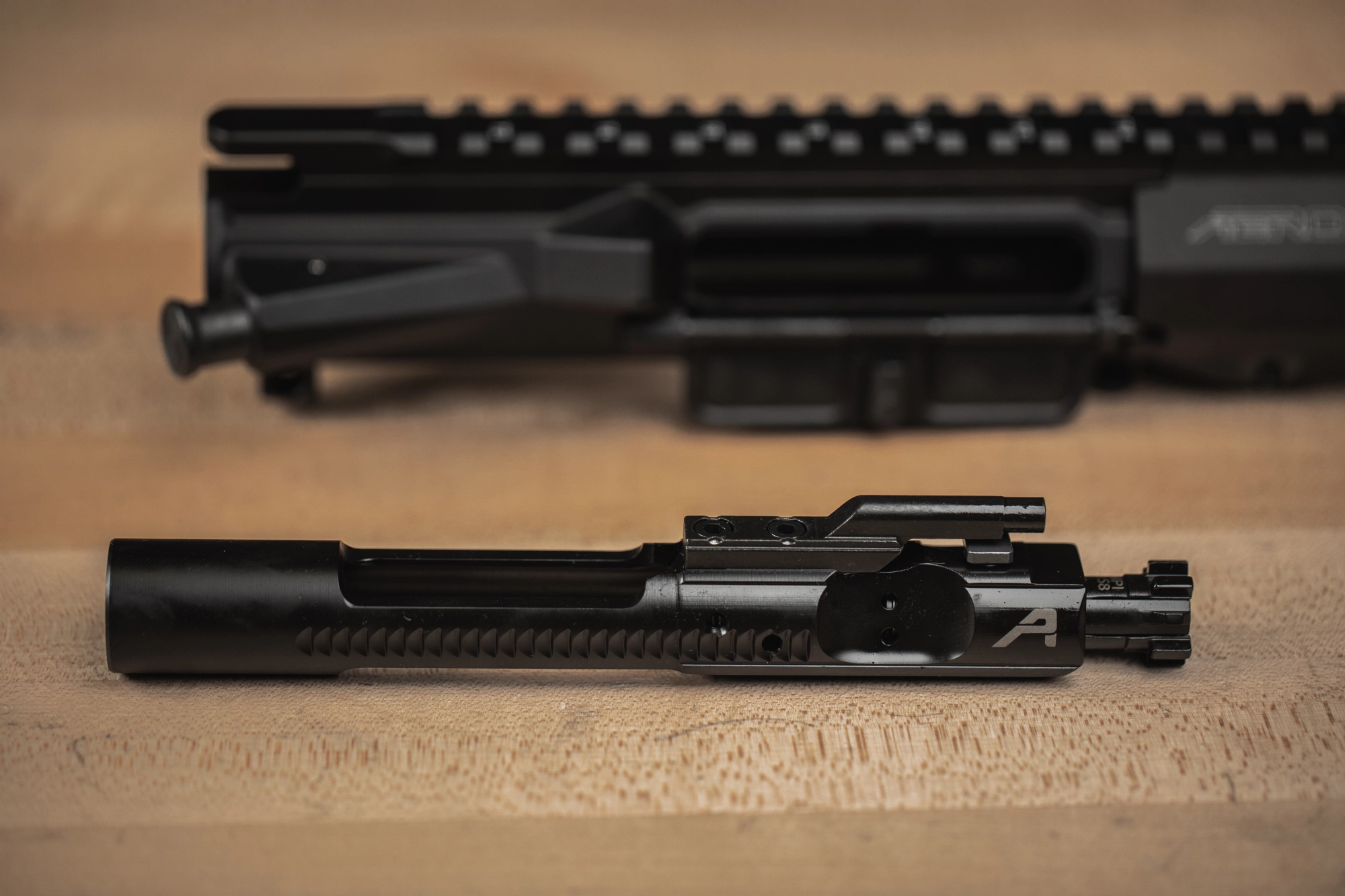
Charging Handle
The last piece you need for your upper is the charging handle. Get a BREACH®. They give you a lot more surface area to grab onto and are ambidextrous for all you wrong-handed shooters. I used to avoid aftermarket charging handles because I am stuck in my ways and the mil-spec never gave me issues. I had played with them in the past when there were not a lot of options out there and shortly after stopped entertaining the idea. When we developed the BREACH® and I got my hands on it, my opinion was changed. Now every build I put together gets a BREACH® (usually in anodized OD green) and I question how I was so content with mil-spec for all these years. If you are unsure if this is the route you want to go or are temporarily constrained on budget, run a mil-spec charging handle for the time being. This is a very easy part to swap out down the road.

Lower Parts Kit (LPK)
Now that you have all the components to build your upper we need to finish that lower you picked out at the start. Essentially all you need to finish a lower is a complete lower parts kit (LPK), buffer kit, and stock.
We offer LPKs with different grips as well as without certain components such as the trigger. Our M4E1 LPK with a MOE grip is a super solid option. The MOE grip is ergonomic and has a convenient storage compartment for paperwork, tools, or anything else you can cram in there.

The included triggers in our LPKs are solid. Stock mil-spec triggers can be horrible, but I think ours are extremely usable. I have standard triggers in a lot of the builds that I run hard and can still get accurate hits so do not overthink this. If you end up hating the mil-spec trigger there are a plethora of good aftermarket triggers (I recommend Geissele) that are easy to install. Aftermarket triggers make for a good upgrade down the road if you are unsure what you like, but generally, if you want an upgrade from mil-spec something like the Geissele SSA/SSA-E is a great premium option that most people like.

Buffer Kit
Buffer kits are another super debated area of choice. To start I would just go with a carbine buffer system as this will give you the ability to run a collapsible stock. Heavy buffers are often something that can be of benefit but unless you know your setup will still operate reliably with one just stick to carbine weight for now to avoid any reliability issues. Our Enhanced Buffer Tube has a ramped rear that makes installing some stocks MUCH easier. It is a quick and easy upgrade you can make right from the start.

Stock
Finally, you need a stock. I like the Magpul MOE-SL as it is ergonomic, lightweight, easy to use, and has a good and solid lockup. This has a lot to do with personal preference, but regardless I think you will like the MOE-SL. Magpul hit it out of the park with these and I am happy to run them on anything with a carbine buffer tube.

Bam. Your rifle is built (Or at least laid out to be built). That wasn’t so hard now was it? Now you just need to add accessories and some quality magazines. This varies based on application and there is no single right way to do it. I accessorize my AR15s all very similarly unless I am building for a specific application that requires something else. My 4 must-have accessories are a good weapon-mounted light, sling, optic, and set of solid backup iron sights. This accessory set will give you everything you need and nothing you don’t.
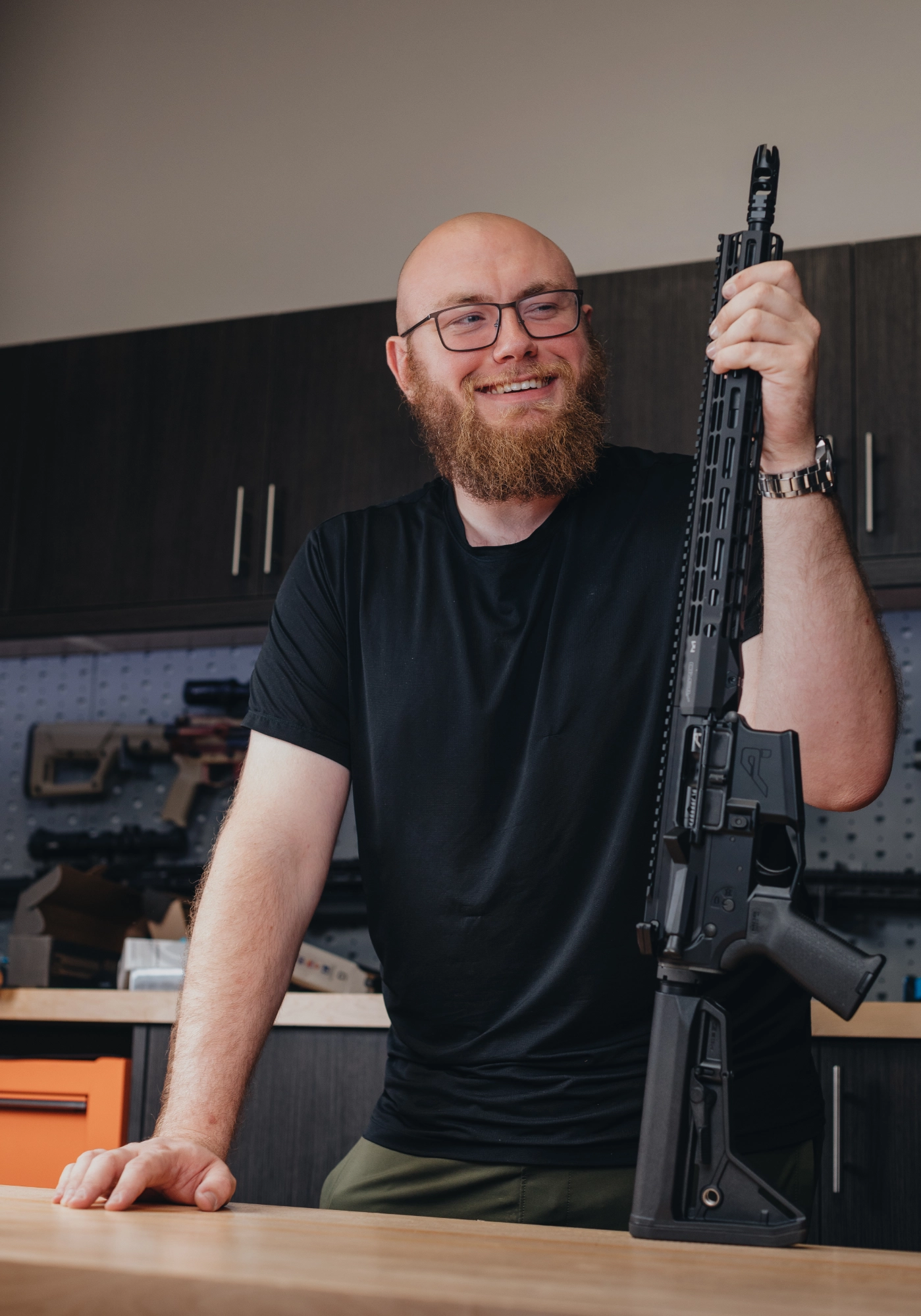
If you need recommendations on these items, below are some companies/products I use and like.
Slings: Ferro Concepts Slingster, Blue Force Gear Vickers
Lights: Cloud Defensive REIN, Surefire M300/M600
Optics: Leupold, Aimpoint, Eotech
Backup iron sights: Magpul MBUS Pro front and rear.
Build List:
16” 5.56 mid-length CMV barrel
5.56 chrome-lined phosphate BCG
Lower Receiver:




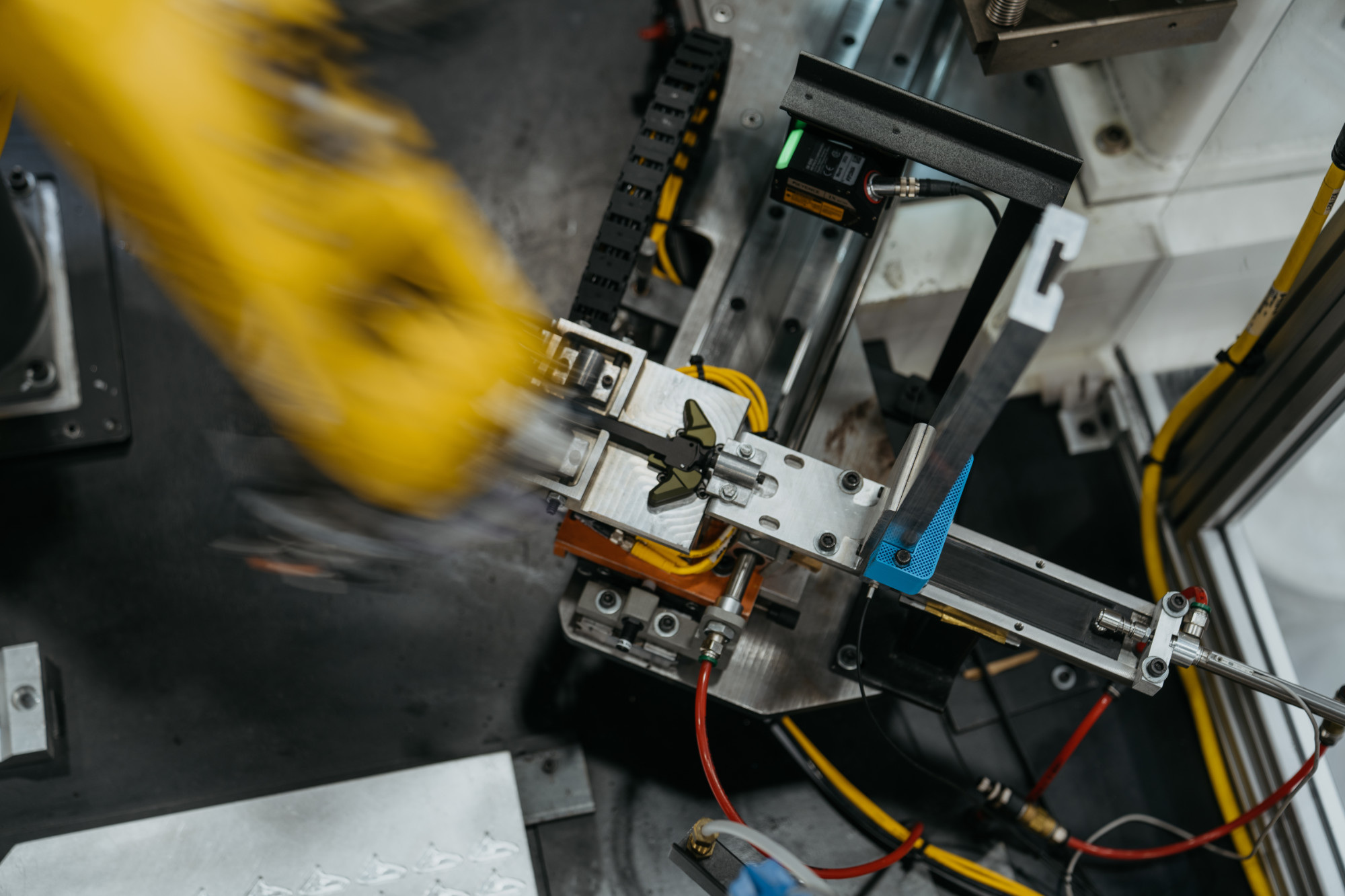
Douglas Padilla
April 3, 2023 at 1:39 am
Awesome, Thank you Kirk.
Mike
May 19, 2023 at 2:04 pm
What an unbelievably comprehensive and helpful article. This is just want I was looking for. Well done!
Donald
May 23, 2023 at 4:55 pm
Kirk, can you do one for lefties?
Thanks!
Bourez
June 12, 2023 at 11:53 am
Donc, quel Ar 15 Aéro précision se rapproche le plus de celui-là mais déjà assemblé en usine? Merci beaucoup, très interessant ????????????
LEB
June 20, 2023 at 11:24 am
Great products. But has NO ONE realized that a having a dark background, black T-shirted speaker wearing black rubber gloves when displaying black gun products in your tutorials is a terrible idea? Why not just turn the lights out also?
Pappy
June 23, 2023 at 12:50 pm
Exactly the help I needed.
Thank you!
Paul B.
June 25, 2023 at 12:22 pm
Excellent Article Kirk. Very comprehensive, easy to read, and the photography is top-notch.
Ben
June 25, 2023 at 6:07 pm
I was stoked to see this AR15 guide and was kind of surprised you were out of so many parts. I would have been over the top to see,a video about the assembly.
Jim Rodemeyer
July 5, 2023 at 3:42 pm
Do you sell a kit for the AR-15
Max Serna
July 7, 2023 at 9:46 pm
If I ordered everything that’s you recommended would you build it and how much to send it to me??
Alan C.
July 8, 2023 at 3:00 pm
I did my first 100% build earlier this year. Other than FCG and charging handle, it is 100% Aero Precision. I really like the Atlas S One hand guard.
Chris Baker
July 15, 2023 at 1:32 pm
I have already decided on a lot of these optional decisions prior to finding your web site. For instance, 20″ barrel and long gas system for minimum recoil although I won’t be using a recoil reducer, they’re just to loud. I already have my lower and parts package and stock. I came looking for the barrel. With my slightly damaged right shoulder and being seriously right handed and eyed and 72 years old I still need a right handed weapon should it come to needing weapons. I’m after light recoil and still get good performance so I want most of the stuff you called out, just in rifle length.
Being as this is my first build I actually had no idea there were so many options. I’ve always been a bolt action person except for my 22s. I’m already thinking about a 2nd build in a very different caliber. I like 257 Roberts. Not sure if the cartridge overall length would fit though. I need to finish my 5.56 rifle first though.
I really enjoyed reading the article and I think I learned a lot too.
Thanks and I look to learning a lot more.
Chris
Keith
November 7, 2023 at 1:13 pm
I know this comment is old now, but if you’re looking for lighter recoil, I suggest a lightweight BCG with an adjustable gas block(so you can turn it down, since less gas is needed to push back the lighter BCG, and less gas coming backwards also helps the recoil, along with the lower reciprocating mass from the BCG). Faxon makes a nice one for a good price. I built my first rifle that way last year and it has very minimal recoil. All my marine buddies said it was the smoothest they’ve shot. I also picked up a JP Enterprises Silent Captured Spring for my next build, going to try and see if that makes it even smoother.
Keith
November 7, 2023 at 1:21 pm
And I mean that as no slight to Aero…I used mostly their parts, they make great receivers, and they have a very nice price on adjustable gas blocks as well. They just don’t happen to make lightweight BCGs.
Craig
October 7, 2023 at 7:13 pm
For California compliant , can you recommend a handel. I just started shooting AR’s and have been using the S&W 15 with juggernaut handle.
Vinh Huynh
January 9, 2024 at 2:29 pm
Hi Craig – our sales support team does not monitor the blog. It’s best for you to reach out to them at this link: https://support.aeroprecisionusa.com/hc/en-us/requests/new
Matt
January 8, 2024 at 9:43 pm
I am a first timer. Not a gun guy by any means. I own a pistol and a .22. Looking at getting an AR and was completely unsure, but this article has definitely given me the information (and confidence) to jump in and go for it. Thank you!!
Mack
March 8, 2024 at 7:00 pm
This is certainly one of the best article-build guides out there. We found that the first thing people look at is handguards & uppers people for whatever reason tend to skip over the lower first. Whether it is people deciding what length of rifle they want to go with first or others getting scared away by the necessity of a ffl we are not sure yet.